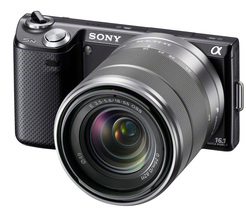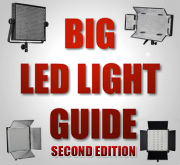Ever since I transitioned from photography to video, especially with my 5D MKII, I stopped using some of my lenses, including my Canon 100-400L. In fact, I’ve only used it once or twice for video needs and had for the occasions when I felt like doing some photography. It is a great photography lens, but for video not so great, really shaky when focusing, even on tripod. I can’t justify keeping it for a very occasional photo session, but I still want to have a 400mm reach if I even need it both in video and photography. I decided to see what I can get with similar features for much, much lower price. I ended up buying 2 lenses, which by no means are the best in this focal range, but which won’t make rob the bank to buy them.
You can see what they are like in the video above, so here I want to talk about my personal conclusions on each of them.
Canon 100-400mm F/4.5-5.6 L – As mentioned above, this is a great photography lens, known to be very sharp wide open and it does look sharp in my little test I’ve done. Image stabilizer helps with the extensive shake, but it is still very difficult to use this lens for video without introducing a lot of shake due to its length when extended and quite stiff focusing ring (find for photography, but had to be much smoother for video). I think this lens is worth its money for photographers, but I can’t justify the price for video users.
Tamron 200-400mm LD f/5.6 – This is one of my 2 potential replacements. This lens offers auto focusing on Canon DSLRs, which is essential for photography needs (not as fast and quiet as Canon though). It is also easy to focus manually, however the lens is even longer than Canon when extended and the lack of Image Stabilizer makes image at 400mm look very shaky when focusing. With such lenses you can just about getaway with having a locked of focus on a tripod without touching the camera, otherwise there is a camera shake all over the place.
To my big surprise the image quality and the sharpness on this lens is very close to Canon. Considering that the lens can be bought about 4/5 times cheaper than Canon, it is certainly an impressive performance. The one thing that is a bit annoying is constant aperture of f/5.6. I can live with it at 400mm, but I wouldn’t use this lens for 200mm shots. There are plenty of vintage 200mm f/3.5 lenses (some which I tested earlier) costing as little as £15, so the really is no point in using such lens for 200mm shot, which for me makes it a bit of waist.
Tokina 400mm AT-X f/5.6 – Now, this is a very interesting alternative to both lenses. As mentioned above, the are plenty of cheaper, faster lenses below 400mm, so what not just get a prime like this one which is 400mm only with the benefits of reduced size, due to lack of zoom. This lens is the most compact out of 3. The only one that has an inbuilt metal (rather than plastic) lens hood. The lens is built like a tank, much better than Tamron. The focusing ring is really smooth with quite a long focusing through comparing to other 2. The combination of shorter length and smooth focusing ring actually lets you focus with this lens without introducing camera shake. This is a big deal for me. There is also auto focusing on Canon DSLRs (for stills of course).
The sharpens of the images is very almost identical to Tamron. Certainly a great performance great for the money. Same as Tamron it is 4/5 times cheaper than Canon, so definitely worth the money.
You can see what they are like in the video above, so here I want to talk about my personal conclusions on each of them.
Canon 100-400mm F/4.5-5.6 L – As mentioned above, this is a great photography lens, known to be very sharp wide open and it does look sharp in my little test I’ve done. Image stabilizer helps with the extensive shake, but it is still very difficult to use this lens for video without introducing a lot of shake due to its length when extended and quite stiff focusing ring (find for photography, but had to be much smoother for video). I think this lens is worth its money for photographers, but I can’t justify the price for video users.
Tamron 200-400mm LD f/5.6 – This is one of my 2 potential replacements. This lens offers auto focusing on Canon DSLRs, which is essential for photography needs (not as fast and quiet as Canon though). It is also easy to focus manually, however the lens is even longer than Canon when extended and the lack of Image Stabilizer makes image at 400mm look very shaky when focusing. With such lenses you can just about getaway with having a locked of focus on a tripod without touching the camera, otherwise there is a camera shake all over the place.
To my big surprise the image quality and the sharpness on this lens is very close to Canon. Considering that the lens can be bought about 4/5 times cheaper than Canon, it is certainly an impressive performance. The one thing that is a bit annoying is constant aperture of f/5.6. I can live with it at 400mm, but I wouldn’t use this lens for 200mm shots. There are plenty of vintage 200mm f/3.5 lenses (some which I tested earlier) costing as little as £15, so the really is no point in using such lens for 200mm shot, which for me makes it a bit of waist.
Tokina 400mm AT-X f/5.6 – Now, this is a very interesting alternative to both lenses. As mentioned above, the are plenty of cheaper, faster lenses below 400mm, so what not just get a prime like this one which is 400mm only with the benefits of reduced size, due to lack of zoom. This lens is the most compact out of 3. The only one that has an inbuilt metal (rather than plastic) lens hood. The lens is built like a tank, much better than Tamron. The focusing ring is really smooth with quite a long focusing through comparing to other 2. The combination of shorter length and smooth focusing ring actually lets you focus with this lens without introducing camera shake. This is a big deal for me. There is also auto focusing on Canon DSLRs (for stills of course).
The sharpens of the images is very almost identical to Tamron. Certainly a great performance great for the money. Same as Tamron it is 4/5 times cheaper than Canon, so definitely worth the money.
All 3 lenses are worth their money and I will let you guys make up your own minds, but my personal conclusion is that I will be keeping the Tokina. This is the only one that I can actually use for video properly and it has auto focusing if I ever fancy taking a few pics.










 RSS Feed
RSS Feed
